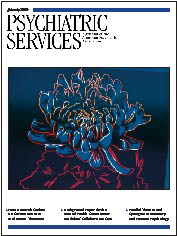High-Cost Use of Second-Generation Antipsychotics Under California's Medicaid Program
Abstract
OBJECTIVE: The high costs associated with second-generation antipsychotic medications raise concerns that prior-authorization restrictions may be implemented to restrict use. This study assessed patterns of antipsychotic use to identify uses that are associated with high economic cost but for which there is no documented efficacy. METHODS: California Medicaid fee-for-service pharmacy claims were analyzed from May 1999 through August 2000 for patients who received risperidone, olanzapine, or quetiapine. RESULTS: Of the 116,114 patients who received at least one of these agents, 4.1 percent received a combination regimen. Polypharmacy was the most expensive form of second-generation antipsychotic use, costing up to three times more per patient than monotherapy. CONCLUSION: Restricting polypharmacy may reduce costs and prevent the need for prior-authorization restrictions.



